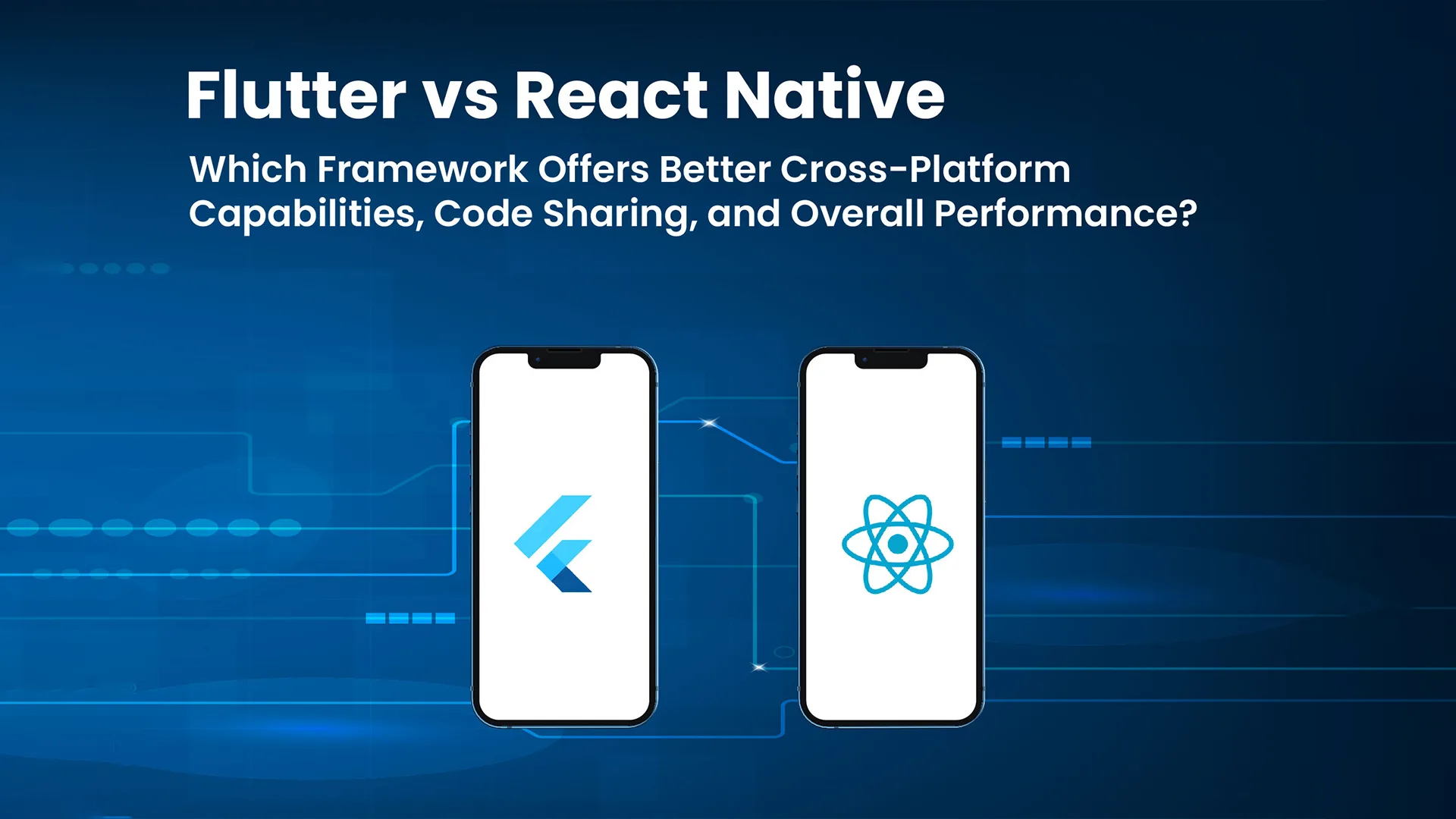Flutter vs. React Native: Cross-Platform, Code Sharing, Performance Compared

27 June
In today’s mobile-driven world, cross-platform app development has become essential for businesses to reach a wider audience and maximize their ROI. To facilitate this, mobile app development frameworks like Flutter and React Native have gained immense popularity among developers. In this article, we will compare the two frameworks and analyze which one offers better cross-platform capabilities, code sharing, and overall performance.
Background
Flutter, developed by Google, was first introduced in 2017 and has since gained popularity for its fast development cycle, hot reloading, and customizable widgets. React Native, developed by Facebook, was released in 2015 and has become a popular choice for developers due to its ability to build high-performance apps with a native look and feel.
Both frameworks offer cross-platform capabilities, allowing developers to build apps for both Android and iOS platforms using a single codebase. Flutter uses Dart programming language, while React Native uses JavaScript and JSX syntax. Flutter’s customizable widgets and React Native’s reusable components allow for efficient code sharing, reducing development time and costs.
Recent updates in Flutter include the introduction of null safety, improved performance, and support for foldable devices. React Native has also made significant improvements in performance and stability, with the introduction of Hermes engine and Turbo Modules.
Comparison
When it comes to cross-platform capabilities, both Flutter and React Native offer similar features. However, Flutter’s customizable widgets and reactive programming model make it easier to create complex UIs and animations. React Native’s reusable components allow for efficient code sharing, but it can be challenging to integrate third-party libraries and plugins.
In terms of performance, Flutter’s compiled code and native-like performance offer faster app startup times and smoother animations. React Native, on the other hand, has faced criticism for its slower performance and memory issues. However, recent updates have significantly improved its performance, making it a more viable option for high-performance apps.
Developers using Flutter have praised its ease of use, hot reloading, and comprehensive documentation. React Native’s large community and vast library of plugins make it easy to find solutions to common problems. However, its steep learning curve and frequent updates can make it challenging for beginners.
Conclusion
In conclusion, both Flutter and React Native offer excellent cross-platform capabilities and code sharing options. Flutter’s customizable widgets and reactive programming model make it a better option for complex UIs and animations, while React Native’s reusable components make it easier to share code. In terms of performance, Flutter’s compiled code and native-like performance offer faster app startup times and smoother animations.
Based on our analysis, we recommend Flutter for developers looking for a fast and efficient cross-platform app development framework. Its ease of use, customizable widgets, and excellent performance make it a popular choice among developers. However, React Native’s vast community and library of plugins make it a viable option for developers with specific requirements.
We encourage readers to try out both frameworks and share their feedback. With the ever-evolving mobile app development landscape, it’s essential to stay up-to-date with the latest trends and technologies.





